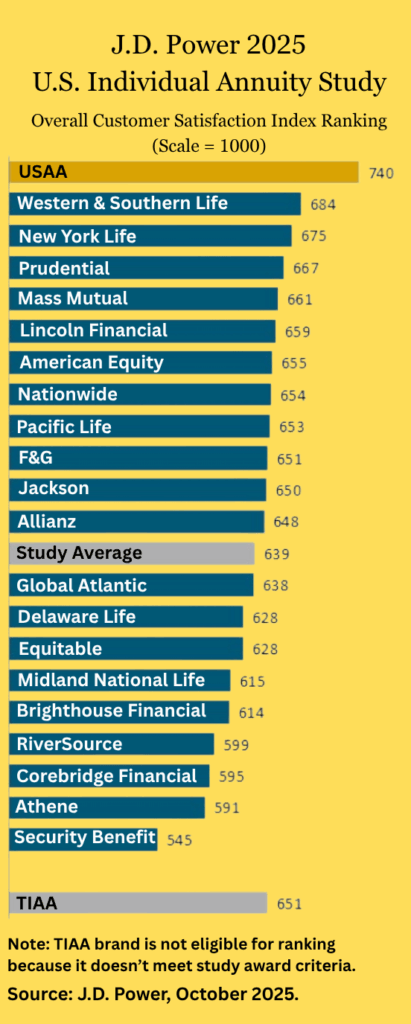
Will tort lawyers use the Best Interest Contract of the new Department of Labor fiduciary rule to turn financial advice into the next asbestos-related, or tobacco-related, or defined contribution fee-related federal class action legal bonanza?
Are small-scale independent advisors at risk of getting sued by disgruntled clients? Are employee-advisors at risk if their deep-pocketed broker-dealer employers get sued? Will clients sue insurance marketing organizations for ethical lapses by the agents they run?
These questions were on the minds of the Certified Financial Planners—many of whom are also licensed to sell securities and insurance products to IRA owners and some of whom are advisors to 401(k) plans—in Baltimore’s Inner Harbor last week at the Financial Planning Association’s annual conference.
The answers, as heard during breakout sessions that hundreds of CFPs attended, ranged between the extremes of “Be afraid, be very afraid” to “Honest advisors have nothing to fear” and a number of positions in between.
At least four speakers at the conference addressed the DOL’s rules legal implications. They included Marcia Wagner, the Boston-based ERISA lawyer; Tim Hauser, the DOL attorney and lead author of the fiduciary rule; Ron Rhoades, law professor at Western Kentucky University; and Doug Lennick, a CFP and founder of think2perform.com, who preaches a gospel of mindfulness.
In the end, “Will I get sued?” may not be the most urgent question. From the financial industry, the battle over the DOL rule may be less about ethics than about pricing. The DOL appears to have focused on the provision of conflicted advice, but its real targets are high-priced products. And in trying to make products cheaper for retirement clients, it—intentionally or not—roils the delicate economies of the entire industry, from advisor to broker-dealer to fund company or insurer.
So, the more load-bearing questions may be: How will manufacturers and distributors adapt to the rule? Will they voluntarily reduce prices and cut costs (perhaps by replacing human intermediaries with robo-advice)? Will they stop taking non-transparent third-party payments? Will they conduct business as usual until someone sues them, and then fight the DOL rule in the courts? Will they assume that the DOL rule will soon apply to taxable accounts? At least until the DOL begins issuing a list of clarifying FAQs, there are more questions than answers.
The next ‘asbestos’?
Wagner, who counsels companies how to avoid ERISA violations, believes that the DOL rule is going to engender a lot of class action litigation. She compared the coming wave of lawsuits to the mesothelioma and tobacco litigation that kept plaintiff’s attorneys busy for decades, as well as to the recent wave of lawsuits against defined contribution plan sponsors and providers for violations of their fiduciary duty to seek lower costs for participants.
The potential liability is clear. The DOL rule gives retirement clients the right to participate in class action suits, without agreeing to forced arbitration, against advisors or broker-dealers who have violated the rule’s so-called “Best Interest Contract,” which requires them to recommend products or services that are in the “best interest” of the client, as opposed to the seller’s interest.
Advisors, broker-dealers and other intermediaries don’t need to sign the so-called BIC, and accept that type of accountability, unless they receive so-called “differential” or “variable” compensation—i.e., commissions or revenue sharing fees that they receive from product manufacturers—when selling to 401(k) or IRA owners.
One way to continue accepting third-party payments without becoming vulnerable to lawsuits, Wagner said, might be to charge a flat rate to product manufacturers whose products they sell. “If it’s all levelized, it stops all prohibited transactions from happening in the first place,” she said. “It’s a de facto exemption” from the rules against prohibited transactions.
Levelization, in this sense, would mean having the broker-dealer determine any source of variable compensation and embed all of those fees in a single price, so that the all-in third-party revenue for a product category would be, for instance, a flat 50 bps. “That’s what much of the industry is engaged in and that will change payout grids [substantially,” she told a gathering of perhaps 250 CFPs.
[A broker-dealer executive disputed that assessment. “Receiving a flat rate would allow us to avoid the conflicts that are created from revenue sharing and omnibus fees, but it’s only a partial solution,” the executive told RIJ.
“First of all, everyone would have to pay the same amount, which means you would have to eliminate companies like Vanguard from your platform since they don’t pay revenue sharing. Second, you would have to set the amount low enough so that every company could afford to pay it. That would mean some companies would pay more than they currently do, but most of the big firms would pay much, much less. In short, you can only replace a portion of what a firm is getting now.”]
Rollovers are slippier
Then there’s the matter of rollovers. Independent advisors who act as fiduciary advisors to 401(k) plans with assets of $50 million or more may become vulnerable to violations of the new rule when trying to convert retiring participants to new rollover clients—which is often the reason why advisors work with 401(k) plans in the first place. The DOL regards this practice, a type of so-called cross-selling, as an opportunistic way to increase revenue from those clients by moving them from an institutionally-priced plan to a retail account.
“Cross-selling practices create potential conflicts of interest, and capturing rollovers is a classic example of cross-selling,” Wagner said. “It’s easy to see the potential to sell products to the sponsors of a plan after years of developing relationships with them. It used to be that if you weren’t a fiduciary to a plan, you could cross sell, but that’s over. Now, if you want to engage a rollover client and get variable compensation, you will need the ‘full-blown’ BIC with all of the disclosures.”
For the independent planner who sometimes sells insurance and/or investment products for commission, perhaps the best way to demonstrate bona fides to clients and regulators is to avoid one-off product sales and wrap the products in the context of a carefully-considered financial plan developed in concert with clients.
“You may want to consider strategic use of financial plans. Quality financial plans force the advisor to consider the whole picture and demonstrate that the advisor’s recommendations are being done in the client’s best interest and the conflicts are being mitigated,” Wagner said.
Either way, advisors need to practice a new level of circumspection in consultations with clients, she added: “Loose lips sink ships. You need to be careful discussing matters with your clients in this brave new world.”
‘Pernicious’ conflicts of interest
The DOL’s Hauser said that the client’s right to use the courts as a remedy against violations of the DOL rule, calling it an “important incentive to compliance.” But he reiterated the DOL’s position that the rule was intended to close an old loophole in the antiquated “five-part” test of fiduciary duty required of pension advisors, not to create a new window for plaintiff’s attorneys.
As for the possibility of enforcement actions by the DOL, a grace period will probably extend well into 2018. That’s judging by Hauser’s statements during a Q&A session at the FPA conference.
“This is major reform. These are significant changes. The DOL is aware of that,” Hauser conceded. “So, in the near term, our aim is to help firms toward compliance. Between April and December, we’ll help people comply. As of April 2017, if [your actions] meet the definition of conflicted transactions, you’ll have to meet the basic exemption [from the prohibition on conflicted transactions] or refrain from those transactions. If you want revenue sharing and 12b-1 fees, you can do that.
“But in exchange you need to enter into a [best interest] contract with the retail customer and set up a website explaining what you’re doing. Starting January 1, 2018, you must begin executing the Best Interest Contracts. We’ll help people comply between April and December. If you’re trying to get things right, the department’s aim is to help you, and that will be true for some time after December 2017.
“The idea that we’re ‘creating law’ by enforcing regulations, I want to remind people, isn’t true. I also often hear that the rule is very complex. I don’t think so. The current fee structures and industry practices are complicated. Trying to hang onto those structures brings a certain amount of complexity to the compliance effort,” he said. A list of answers to “Frequently Asked Questions” about the DOL will appear this fall “on a rolling basis,” he added.
Don’t ‘complify’ matters
“I’m seeing some firms that are attacking this problem and building new advice platforms and new compensation schemes, who are getting ready for the DOL rule even before the 2017 deadlines,” said Rhoades. “Some have their heads in the sand. They’re saying, ‘This can’t be happening.’ Others are waiting. But this will transform the way firms operate. We will see the proportion of fee-based accounts move to 60% or 70% of the advisory business from 40% in a relatively short period.
“Some firms and advisors think they can continue to do what they’re doing—that is, they can live with the BIC and still sell high commission products. You have a duty to justify client expenditure of funds. I have heard people say they will use the same process for choosing investments. That’s not going to fly,” he added.
“It’s one thing to say your fees are reasonable, but now you will need to benchmark your fees. When it comes to investment policy you have the duty to select the strategy prudently. You can’t do it ad hoc. When choosing products, it’s a fight for basis points. In the 401k suits, for example, one action said the plan sponsor should have chosen a fund with two less basis points.”
Rhoades and Doug Lennick both put forward the idea that advisors who never put themselves in conflicted positions or engage in self-dealing can consider themselves safe from litigation. “When you do everything right, you don’t worry about liability,” he said. “You’re more likely to have liability when you have conflicts of interest.”
“The DOL is giving the client the opportunity to take action against advisors or firms,” said Lennick. “This may create class action suits. A lot of people in our industry ‘complify’ instead of simplify. But if you’re profoundly simple, if you practice empathy, if you prepare your clients for the ‘certainty of uncertainty,’ then you will always be in a defensible position. Your clients will not sue you. They will give you a referral.”
© 2016 RIJ Publishing LLC. All rights reserved.










